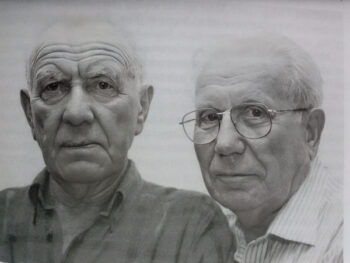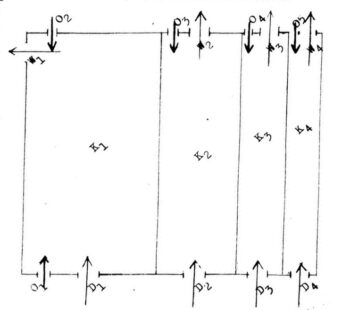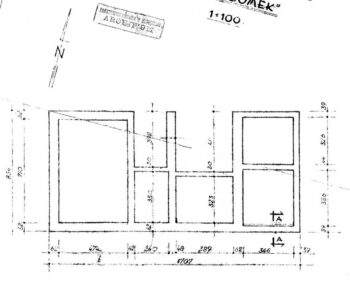Dragon, Szlama

Szlama Dragon (19 March 1922 – 6 Oct. 2001) was a Polish Jew incarcerated at the Auschwitz-Birkenau Camp, where he claims to have served from 8 December 1942 until early 1944 at the so-called “bunkers” of Auschwitz, and since February 1944 in Crematorium V. His testimony is considered a key statement about the alleged extermination operations at these bunkers. His testimony consists of three statements: The first made to Soviet investigators on 26 February 1945, the second on 10 and 11 May 1945 to the Polish judge Jan Sehn in preparation of the show trial against former camp commandant Rudolf Höss, and a final one made in 1993 to the Israeli historian Gideon Greif (English in Greif 2005, pp. 122-180).
The two testimonies recorded at war’s end are characterized by contradictions regarding the terms used to describe the facilities (the term “bunker” was unknown to any witness prior to March/April 1945), the number of doors it had, whether windows were made gastight or were bricked up, the locations of undressing barracks, how many cremation pits there were, and how far away these two bunkers were from each other. More important, however, are the following evidently false claims about these alleged facilities and their associated incineration pits (Mattogno 2016f, pp. 73-85):
- Dragon claimed that these facilities were packed with a physically impossible density of 20 to 25 victims per square meter.
- He claimed that he was selected at arrival on 7 December 1942 by Dr. Mengele, who was assigned to Auschwitz only on 30 May 1943. He also claimed that Mengele was in charge of homicidal gassings.
- He claimed that gassings were at times performed by an SS man called Schei[n]metz, but no person with this or a similar name was ever stationed at Auschwitz.
- Although he claimed to have worked at one of the bunkers only for a few days, he asserted that, on average, “17,000 to 18,000 persons were burned in 24 hours” in the trenches near the bunkers, which are said to have ceased operation at the end of March 1943. From 8 December 1942 to 31 March 1943 are 113 days, so in total some two million Jews would have been killed and burned just during those three and a half months – clearly impossible.
- At peak performance, he claimed a daily rate of 27,000 to 28,000 persons. With some 4,000 persons per batch as claimed by him, this amounts to around seven gassing batches per day, or one every three hours or so, around the clock; this is absurd.
- Dragon claimed that, at Bunker 1, with an average capacity of 7,000 to 8,000 corpses burned daily, only 28 inmates were in charge of procuring wood. Since open-air incineration of corpses require about 250 kg of freshly cut wood per corpse, some 1,750 to 2,000 tons of fresh wood would have been required every day, or 62 to 71 tons per inmate every day. However, an average prisoner is rated at being able to cut only some 0.63 metric tons of fresh wood per workday. Therefore, 2,800 rather than 28 inmates would have been required to cut the wood needed.
- He described Bunker 1 and the events unfolding around it in detail, yet states at the same time that he never worked there.
- Dragon drew a sketch of “Bunker 2” showing four unequally sized parallel rooms. In his deposition, he claimed a capacity of each of the four rooms of 1,200, 700, 400 and 200-250 people, on an overall floor area of 100 m². All rooms had the same length (the width of the building), but different widths. Hence, their width ratio was roughly 12:7:4:2.5. Following his sketch, the building may have been some 8.5 m wide and 12 m long (not counting walls). In that case, the rooms had a width of roughly 5.5 m, 3.3 m, 1.9 m and 1.2 m. No competent person would have built a “gas chamber” 8.5 meters long and just 1.9 or even 1.2 meters wide.
- This awkward division of the building, plus his description of the facility, contradict the description and sketches of that same building drawn by the other key witness for the bunkers, Dov Paisikovic (3 equally sized parallel rooms). Both Paisikovic’s and Dragon’s sketches and descriptions moreover radically contradict the foundation walls of this building, which still exist today (seven irregularly sized and arranged rooms, see the illustrations).
 |
 |
Left: floor plan of the alleged homicidal gassing facility called “Bunker 2,” drawn in 1945 following Szlama Dragon’s instruction (no measures given). Right: floor plan of the ruins of the only building located in the claimed area, drawn in 1985 on request of the Auschwitz Museum: some 17 m long and 8 m wide, with seven highly irregular rooms. (Taken from Mattogno 2016f, pp. 238. Click on images to enlarge.)
- Dragon claimed that liquid fat collected at the bottom of the cremation pits, and that it was collected by the SS and used to fuel the fire. The physically impossible fairy tale of fat extracted from burning corpses was often repeated by witnesses, and this proves the untrue, copy-cat nature of their claims.
- Dragon claimed that corpses pushed into the furnaces of Crematorium V caught fire immediately – which cannot be true, as humans are not made of paper or wood – and that their limbs rose up, which is also physically impossible.
- He insisted that the cremation of three corpses in a furnace at Auschwitz lasted only 15 to 20 minutes, when in fact the cremation of just one single corpse took roughly an hour.
- Dragon claimed that two corpses were inserted first, then another third corpse. However, this would have required tipping the 45-cm-wide stretcher steeply upward to get it on top of the two corpses already in that muffle, which would have meant hitting the muffle vault where it is 45 cm wide with the stretcher’s end rather than being able to insert it fully to unload the next two corpses – which might actually have slid backwards and off the stretcher with such an inclination.
- Dragon asserted that they pushed in two corpses at once, then a third one on top of it, which had to be done quickly before the arms and legs of the first pair of corpses began to rise from the heat. However, dead people cannot raise their arms and legs, and neither can heat, which burns muscles, but does not contract them in a coordinated fashion, defying gravity. This statement resembles that of Henryk Tauber in this regard and shows a “convergence of evidence” for orchestrated lies.
- According to him, 300,000 Jews from Hungary were cremated just in Crematorium V within two months in the spring of 1944, although that is the claimed total death toll of these two months for all crematoria and Bunker 2.
Dragon’s testimony to Gideon Greif 50 years after the claimed events is characterized by him reading his own Polish deposition of 1945, from which he lifted passages at times almost verbatim. Therefore, the interview was a farce. Yet still, he added more absurdities to his tale, such as (ibid., pp. 132-134; Mattogno 2022e, pp. 155-168):
- He claimed to have attempted suicide on the first day of being deployed at one of the bunkers, yet instead of being gassed as a dangerous witness unfit for work, he was nursed back to health, and his brother Abraham Dragon (also deployed at the bunker) was allowed to go with him to the infirmary and help him get better. Perhaps the SS men were kinder to the inmates than we have been led to believe; either that, or Dragon was lying.
- Dragon claimed that, when the inmates revolted due to ill treatment, the SS was nice and accepted all their demands.
- He claimed that all the other members of the Sonderkommando were killed as dangerous carriers of secrets, but that he was spared (and also his brother, and the many other Sonderkommando members who have since testified…). The reason for his miraculous survival: he got sick and was in the infirmary on that day. That claim is absurd, however, because Sonderkommando members who became unfit for work were supposedly killed instantly rather than nursed back to health. But that is evidently untrue as well.
- Dragon claimed to have put three corpses side-by-side on a stretcher to insert into a cremation furnace, although that stretcher was only 45 cm wide.
- He claimed that he could smell the “sweetish taste of the gas,” although Zyklon gas does not smell sweetish. He moreover insisted to have worn a gas mask while smelling the gas, which would not have been possible. Had he ever been in a position to “smell” Zyklon gas, he would surely be dead.

You need to be a registered user, logged into your account, and your comment must comply with our Acceptable Use Policy, for your comment to get published. (Click here to log in or register.)